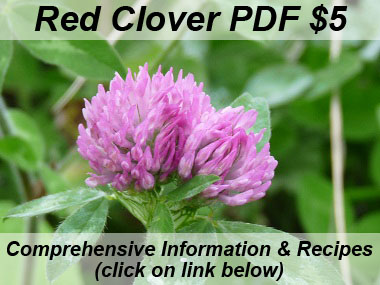Using Nitrogen Fixing Plants
The use of Nitrogen fixing plants in your garden is widely known to be beneficial to your annual crops.
This is because the Nitrogen made available in the soil by these plants becomes available to the food crops.
The same concept applies in food forests where Nitrogen fixing trees and shrubs are used in place of cover crops.
What tends to be glossed over, or overlooked entirely is information on how to release this Nitrogen in a form that is available to other plants.
Often, the reader is left to assume that the hard work performed by the bacteria, and the plant that they live in symbiosis with just give it away freely, and this is not the case.
Nitrogen compounds and sugars are exchanged between bacteria, and the root system of a Nitrogen fixing plant. This Nitrogen is stored within the roots of the plant until it is needed.
Some of this Nitrogen goes toward the production of foliage, but by far the most is used for the construction of seeds, and seed pods.
The only way that this Nitrogen can be made available to other plants is to prune the Nirtogen fixing plant.
Turning in a cover crop is pruning in its simplest form where the entire plant is killed, and its decomposition releases the desired nutrients.
Pruning a tree or shrub for the purpose of mulching is a more sophisticated process because it is desirable that the plant survive and grow back so that the process can be repeated many times.
When any plant is pruned above ground, there is an equivalent self-pruning done by the plant in the root network.
This means that Nitrogen is introduced through the decomposition of the foliage as well as the unseen decomposition of roots.
Actually, a plant will self prune it's root system in dry times as well, which means you can fertilise your garden simply by not watering your Nitrogen fixing plants.
Knowing that a plant self prunes its root system is useful because it is a highly efficient means for fertilising the soil. The roots decompose, leaving nutrient rich compost in a fine web through the soil without any need for digging or turning in. This compost not only provides nutrients, but also a network of corridors through which water can permeate.
With many nitrogen fixing plants, deciding when to prune is important from a Nitrogen release perspective.
For example, if you desire that most of the Nitrogen is to be within the soil, then the optimum time to prune is when Nitrogen is concentrated within the root system. This is just before the plant sets seed.
If you desire most of the Nitrogen is to be on top of the soil (as mulch or compost) then the optimum time to prune is when Nitrogen is concentrated in the foliage. This is when the seeds are approaching maturity.
These aspects of pruning and timing form the basis of chop n drop mulching practices in a food forest.
These techniques can be applied to a garden bed without having to till the soil.
For example, bush beans are known to continue bearing beans so long as you pick them.
This means that the Nitrogen stored in their roots is not exhausted after the first flush.
There is little Nitrogen left anywhere in the plant once it finally dies after you pick all the beans, but if it is cut off at the soil level after its first flush, then the following results:
- A bean crop can be obtained
- A large portion of Nitrogen released to the soil without the need for tilling
- Nitrogen rich foliage useful for composting
- Space and time in the garden for a second crop




No comments:
Post a Comment